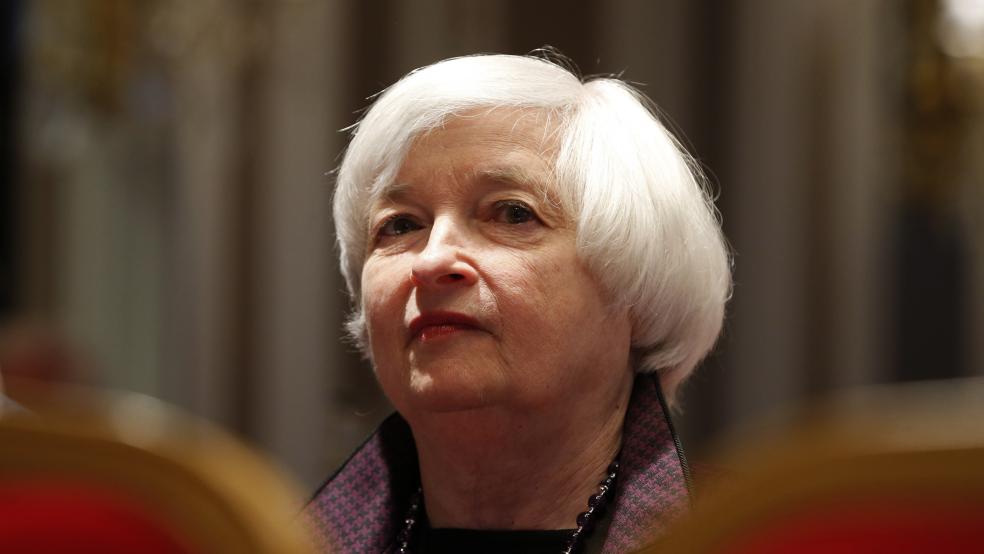Will the Fed raise rates when it meets later this month? Inflation remains below the Fed’s two percent target, and that argues against a rate increase. But labor markets appear to be tightening and that is raising worries that higher inflation is just ahead. Should the Fed launch a preemptive strike against the possibility of wage-fueled inflationary pressure?
To answer this question, the Fed must first determine if labor markets are as tight as the headline numbers on unemployment suggest. This is a topic of much current debate, but if the Fed concludes that they are, it must then determine how much wage inflation to expect, and how it will translate into an increase in prices. If, for example, wages are expected to rise by one percent how much should we expect prices to rise – will it be the full one percent?
Related: A Fed Rate Hike Could Turn Global Financial Anxiety Into a Nervous Breakdown
Some members of the Fed are clearly worried about tightening labor markets. For example, in July Cleveland Fed president Loretta Mester said:
…we are now beginning to see signs that wage growth is picking up. Year-over-year gains in the Employment Cost Index, a comprehensive measure of wages and benefits, rose from under 2 percent in the first quarter of last year to over 2-1/2 percent in the first quarter of this year. … In my view, the totality of evidence suggests that the economy is at or nearly at the Fed’s mandated monetary policy goal of maximum employment.
But subsequent data have not been kind to this point of view. As the Wall Street Journal noted after the most recent labor cost statistics became available, wage growth has been much lower than many people predicted based upon the declining unemployment rate:
U.S. employers aren’t yet being squeezed by workers demanding higher wages. The employment-cost index, a broad gauge of wage and benefit expenditures, rose a seasonally adjusted 0.6% in the fourth quarter last year, the Labor Department said Friday. That’s down from 0.7% in the two earlier quarters and jibes with other data showing only limited wage pressure across the U.S.
Related: Further Dollar Rally Hinges on Fed Hiking Rates Soon
So how can we reconcile low wage growth with low unemployment rates? One answer is that the headline labor market statistics are misleading, and quite a bit of slack is still present in labor markets. Another is to argue that low wage growth at full employment is consistent with low productivity. For example, as my colleague and Fed Watcher Tim Duy points out, Jeffrey Lacker, president of the Richmond Fed recently said:
Some argue there must be excessive slack in labor markets if wage rates are not accelerating. But real wages are tied to productivity growth, and productivity growth has been slow for several years now. Wage growth in real terms has at least kept pace with productivity increases over that time period, which is perfectly consistent with an economy from which labor market slack has largely dissipated.
Tim also quotes Janet Yellen:
“The growth rate of output per hour worked in the business sector has averaged about 1‑1/4 percent per year since the recession began in late 2007 and has been essentially flat over the past year. In contrast, annual productivity gains averaged 2-3/4 percent over the decade preceding the Great Recession. I mentioned earlier the sluggish pace of wage gains in recent years, and while I do think that this is evidence of some persisting labor market slack, it also may reflect, at least in part, fairly weak productivity growth.”
Related: Bill Gross—Fed Tightening Now Could Create Self-Inflicted Instability
My view is that there is more slack in labor markets than these statements acknowledge, though Yellen does nod in this direction. When this is combined with the fact that inflation is below target and shows no sign of increasing to problem levels, it seems clear to me that the Fed should keep policy on hold.
But that is likely to be a losing argument at the Fed. A majority of Fed members appear to believe we are close to full employment, and inflation is a worry, but there is quite a bit of uncertainty about this. As I have argued repeatedly, along with many others, in the face of such uncertainty raising rates too soon is potentially much more harmful than raising rates too late, so why not take a wait and see approach?
The answer from the Fed is that there are long lags between the time policy is implemented and its impact on the economy, so the Fed needs to preemptively change policy well before evidence of rising inflation is present in the data.
However, two factors work against this argument. The first comes from new research by Ekaterina Peneva and Jeremy Rudd of the Federal Reserve, “The Passthrough of Labor Costs to Price Inflation.” This work finds that there is “little evidence that changes in labor costs have had a material effect on price inflation in recent years.” They also review other research on this topic, and note, “The general conclusion that emerges from this literature is that there appears to be a break in the relation between labor costs and broad price measures, with changes in labor costs having little or no predictive power for price inflation after the early 1980s.”
Related: Muddled Jobs Report Leaves Fed in a Jam Watching Markets
Thus, members of the Fed who remember the “cost push” inflation of the 1970s may be basing their policy conclusions on fears about pass through from wages to prices that are no longer justified by empirical results. In any case, the research supports a cautious approach to raising rates even if labor markets are tightening.
And there is something else that has likely changed since the 1970s, the lag between changes in monetary policy and its impact on the inflation rate. To explain this lag, macroeconomists use mechanisms such as the costs of changing prices, the cost of adjusting inventories, and the cost of adjusting the labor force that cause firms to spread the adjustment to shocks over time.
Empirical work performed long ago found that the lags in response to monetary policy changes are, to quote Milton Friedman, “long and variable.” But it’s hard to believe that the lags have not shortened over time with advances in digital technology. Price changes no longer need to be calculated by hand, inventory management has improved by leaps and bounds, labor market insecurity has risen, and so on, and so on. The precise value of the policy lag is not known, it is very difficult to determine econometrically (especially when the structure varies due to technological change), but if the lags have shortened – and it’s hard to believe they haven’t – then the Fed can be more patient now than in the past.
The inflation problems of the 1970s, the loss of Fed credibility that came with it, and the need to impose the Volcker recession in the early 1980s to bring inflation down to tolerable levels made an indelible impression on policymakers who lived through that time period. The Fed’s trigger-happy response to any suggestion of an inflation problem is directly related to the desire to never let such an inflation outburst happen again.
But it has been more than four decades since the beginning of the inflation problems of the 1970s, and the economic environment in which monetary policy operates has changed considerably since that time. Those changes support patience, particularly in response to increases in wages, wages that have been stagnant since the 1970s even as labor productivity has been increasing.
My preference is for the Fed to wait until it actually sees clear evidence of increasing inflation before slowing the economy and, at the same time, slowing the wage growth that workers have been waiting so long to see. However, that is likely too much to ask. But the Fed should at least be patient. Recent research suggests that waiting a little longer before raising rates is unlikely to cause the inflation the Fed is so worried about, and waiting to raise rates could be of great benefit to the many people still seeking work, and to those who toil daily to support their families, yet still struggle to make ends meet.






